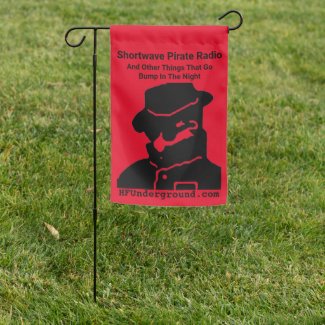On HF (i.e., shortwave), the absolute height of the antenna doesn't matter much; what matters more is the height above the
immediate local terrain. That is, an HF antenna in Denver, Colorado (at 5280 feet/1609 meters altitude) mounted ten feet/three meters above the local ground will be roughly as effective as the same antenna in New Orleans, Louisiana (roughly sea level) that is also mounted ten feet/three meters above local ground. (Forgetting for a second about the fact that southern Louisiana has rich, relatively conductive soil and Denver's rocky soil is relatively poor in that regard.)
HF is not like VHF/UHF TV or FM broadcast where height above, not just local terrain but "extended" local terrain, is everything. TV broadcast antennas are on tall building, or even mountains, that can see everything around because these frequencies are
reliably useful at line of sight only. That doesn't change if the antennas are meant to be used in Denver or New Orleans; they still have to be up high.
So climbing up a hill to make an HF antenna there won't help the cause very much, but if you are worried about "prying eyes" or interfering with your neighbor's guitar amplifier(s), then getting away from all that can be of strong value. The caveat is that, if going up into a remote area forces you to put up a cruddy compromise antenna that is barely off the ground, then it's a waste of time.
HF antennas are a large topic and I don't claim to be an expert. Start out with something simple like a dipole or a wire fed against ground (now popularly called "the end-fed half wave") and as you learn more maybe you can get into something more complicated. Expect to make some mistakes along this journey. The key thing is to get the damn thing above the ground directly underneath it, as high as practical.
Yes, hams do go up on hilltops and mountains (called Summits on the Air [SOTA]) or just into a some sort of park (county park, state park, even national parks) and this is called Parks on the Air [POTA]. While I can't speak for all areas and jurisdictions, I'm going to say don't worry too much about a ranger coming across you or your antenna. If you hide it well, chances are it will survive. Especially now, the US Park Service has been cut so much that I'm going to say that the rangers have their hands even more full than they already were before 20 January, 2025. Worst case, make the antenna disposable. If some asshole cuts it down, you won't be out $1000 and you just put up a new one.
Also, the Federal Communications Commission, the folks who might actually "bust" you for pirating in the US, have been so withered and emasculated in the last ten to fifteen years, even before Trump's wanton hacking and slashing, that they focus almost exclusively on FM pirates in three large cities (NYC, Boston and Miami) and HF isn't something they think about much.
One more thing to say about this - SOTA (and maybe POTA?) involve non-permanent, easy to put up and down compromise antennas that aren't fantastically efficient but they are better than nothing. (Example, the "end-fed" referenced earlier a few feet off the rocky top of a mountain, with one counterpoise wire, for example.) What "works" for a guy scurrying up a mountain to operate CW (Morse Code) on a frequency and time schedule that is 1) published ahead of time on the internet, 2) to chasers who are waiting by the radio with headphones ready to pick a weak Morse signal out of the noise is not really appropriate for an shortwave broadcaster on AM. There are orders of magnitude difference in terms of necessary signal-to-noise ratio required for your audience to just "kinda, sorta" hear you. The takeaway from this paragraph is that don't expect to copy a ham's SOTA setup and expect it to work well for your needs.
So what
does work? Well, I'm glad that you asked.

Some currently active North American and European pirates use something on the order of a 10-25 Watt transmitter (AM or single-sideband) and a dipole antenna at approximately 20-30 feet (~6-9 meters) above the ground from a fixed location, generally their domicile. (Many also use more than this too.) This doesn't make them a large international broadcaster (e.g., China Radio International) but it does make then an effective
regional broadcaster., with a listenable signal under normal conditions out to ~ 600 miles/1000 km and less effective outside of that. Going beyond that requires another order of magnitude in terms of power and/or antenna. If you are hauling batteries up a mountain, take that into consideration.



